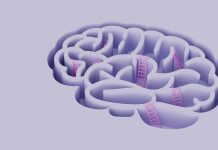Dr Andrea Pickering, Consultant Clinical Psychologist at Clinical Partners and Fellow of the British Psychological Society, makes the case for better diagnostics, earlier intervention, and family-centred care in eating disorders
It has been estimated that over 1.25 million people in the UK have an eating disorder, (1) an estimate because many people remain undiagnosed and have not accessed specialist support. But why? Because stigma silences, diagnostic criteria are outdated, and systems currently fail those most in need.
Affecting people of all ages, genders, and backgrounds, eating disorders come in many forms: anorexia nervosa, bulimia nervosa, binge eating disorder, avoidant/restrictive food intake disorder (ARFID), and other specified feeding or eating disorder (OSFED). If left untreated, these disorders can disrupt emotional development, education, and relationships. At worst, they can be fatal. For every 1,000 people with anorexia, around five die each year, with suicide accounting for 20% of these deaths. (2) For bulimia, the mortality rate is nearly two per 1,000 people. (2)
Why are eating disorders on the increase?
The rise in eating disorders cannot be attributed to a single cause, but reflects a complex interplay of biological, psychological, social, cultural, and systemic factors. However, what this increase has made clear is that the stereotype of the young, underweight female no longer fits:
- From an increasingly early age, children are subjected to mounting pressures around self-image and social conformity. Social media platforms such as Instagram and TikTok intensify this by continuously exposing young users to idealised body types, lifestyles, and ‘what I eat in a day’ content. As a result, harmful ideas about control, thinness, and self-worth are being internalised at a younger age than ever before, with cases of anorexia now seen in children as young as five.
- Men are increasingly seeking help, with an estimated 25% of people with eating disorders being male, a figure likely underreported due to stigma and diagnostic bias. (3)
- Among older adults, eating disorders can be triggered by major life transitions such as retirement, bereavement, or divorce. The loss of structure, identity, and control that comes with these changes may lead to disordered eating as a maladaptive coping strategy. (4)
Of course, growing awareness and improved recognition are also contributing to the rise in diagnosis. This is a welcome shift, but only if it is met with timely access to appropriate care.
Diagnostic challenges
Despite rising diagnostic rates, the complexity of eating disorders means many still go misdiagnosed or misunderstood. They frequently co-occur with neurodevelopmental conditions such as attention-deficit hyperactivity disorder (ADHD) and autism spectrum disorder (ASD), which share overlapping traits, rigid thinking patterns, sensory sensitivities, emotional dysregulation, and impulsivity or compulsive behaviours. Emerging research suggests that differences in inhibitory control, including attention, impulse regulation, and cognitive flexibility, may represent a shared vulnerability across eating disorders and neurodivergence. (5)
Additionally, not all individuals with eating disorders appear underweight, particularly in the early stages. Yet diagnostic frameworks often rely on rigid physical markers like BMI, which are not appropriate for children, nor available to the referrer, which can delay recognition and intervention. The longer an eating disorder goes untreated, the more entrenched the behaviours and thought patterns become, making recovery more difficult.
Treatment challenges
Eating disorders require specialised, multidisciplinary care, and yet access remains fragmented and inequitable. While there is strong evidence for psychotherapy, cognitive behavioural therapy – eating disorders (CBT-E), and nutritional counselling, many individuals face long waiting lists and are forced to navigate disjointed systems with little guidance or coordination. (6)
In this fragmented landscape, individuals with eating disorders are often treated in isolation. Person-centred care is essential, but this also includes a holistic perspective, including the wider family system. Family systems theory offers a powerful framework for understanding eating disorders not as isolated symptoms, but as part of broader relational dynamics. It encourages clinicians to explore the impact of symptoms on communication patterns, emotional responses, and adjustments in family roles that would benefit from support and intervention.
Evidence-based approaches such as Family-Based Treatment (FBT) (7) and the New Maudsley Method (6) apply this thinking in practice, equipping families with practical tools to support recovery. Family members are viewed as key partners in the clinical team and a source of solutions to aid recovery, making treatment more sustainable, compassionate, and effective long-term.
Critical next steps
To address eating disorders as a public health crisis, we must move beyond awareness to coordinated, system-wide action. Diagnostic criteria and NICE guidelines must be modernised to reflect diverse presentations and co-occurring conditions, and healthcare professionals need better training to spot early signs. Access to specialist, multidisciplinary care must improve, with shorter waits and fairer distribution. Family involvement should be standard, and prevention and early intervention embedded across schools, primary care, and youth services. With the right commitment, we can shift from fragmented care to early, inclusive, and sustained recovery.
References
- Beat Eating Disorders. (2018). How many people have an eating disorder in the UK? Available at: https://www.beateatingdisorders.org.uk/get-information-and-support/about-eating-disorders/how-many-people-eating-disorder-uk.
- National Institute for Health and Care Excellence (NICE). (2024). Eating disorders: Background information – Prevalence. Clinical Knowledge Summaries. Available at: https://cks.nice.org.uk/topics/eating-disorders/background-information/prevalence.
- Oxford Health NHS Foundation Trust. (2025). The unexpected face of an Eating Disorder. Available at: https://www.oxfordhealth.nhs.uk/news/the-unexpected-face-of-an-eating-disorder.
- Clerkin, B. (2024). Anorexia among older people: Signs to look out for and how to help. Within Health. Available at: https://withinhealth.com/learn/articles/anorexia-among-the-elderly.
- Norton, B, Sheen, J, Burns, L., Enticott, P. G, Fuller-Tyszkiewicz, M, & Kirkovski, M. (2024). Overlap of eating disorders and neurodivergence: The role of inhibitory control. BMC Psychiatry, 24, Article 454. Available at: https://doi.org/10.1186/s12888-024-05837-6.
- Eisler, I., Simic, M, Blessitt, E, Dodge, E, & MCCAED Team. (2016). Maudsley Service Manual for Child and Adolescent Eating Disorders. South London and Maudsley NHS Foundation Trust. Available at: https://mccaed.slam.nhs.uk/wp-content/uploads/2019/11/Maudsley-Service-Manual-for-Child-and-Adolescent-Eating-Disorders-July-2016.pdf.
- Rienecke, R. D, & Le Grange, D. (2022). The five tenets of family-based treatment for adolescent eating disorders. Journal of Eating Disorders, 10(1), Article 60. Available at: https://doi.org/10.1186/s40337-022-00585-y.











